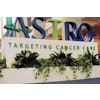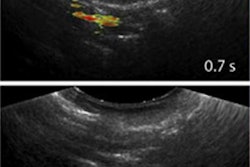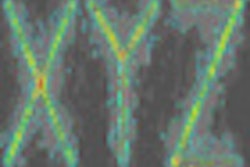Aggressive treatment using chemotherapy and radiation therapy (RT) is producing better curative and survival outcomes for individuals with head and neck cancers. But these treatments are like a double-edged sword, because the risk of developing acute and late toxicities, especially swallowing dysfunction, is high.
Patients who develop swallowing dysfunction require timely intervention to prevent dehydration and malnutrition, both during and after their treatment. Being able to identify which patients are at risk is very beneficial for overall treatment planning. Dehydration, malnutrition, and weight loss weaken patients, affecting quality of life and survival outcomes. Patients with these conditions require hospitalizations, interruption in treatment, or may not even be able to complete the therapy.
In 2008, radiation oncologists in the Netherlands developed a model designed to predict which patients receiving treatment for head and neck squamous cell carcinoma were most likely to develop swallowing dysfunction six months or more after treatment. Their prognostic model, the total dysphagia risk score (TDRS), was developed from a detailed analysis of more than 500 patients. They also stated that the model could be used to identify patients at greatest risk of developing acute swallowing disorders during chemoradiotherapy treatment (Langendijk et al, Radiotherapy and Oncology, February 2009, Vol. 90:2, pp. 189-195).
To test the validity of the model with a different patient population, a team of Japanese radiation oncologists applied the TDRS model to patients treated at Saku Central Hospital in Saku, Japan, between December 1998 and March 2006. The retrospective analysis from lead author Keiichiro Koiwai, MD, of the radiology department at Shinshu University School of Medicine in Matsumoto, and colleagues confirmed the potential usefulness of the model -- their results are described in an article published online September 2 in Radiotherapy and Oncology.
The TDRS model
Beginning in 1997, radiation oncologists at the VU University Medical Center in Amsterdam prospectively enrolled 529 patients in a study to analyze acute and late toxicities from treatment. All patients had been diagnosed with head and neck squamous cell carcinoma originating in the oral cavity, oropharynx, larynx, hypopharynx, or nasopharynx and were disease-free six months after treatment. Also, all patients had been treated with curative radiation therapy, either alone or in combination with chemotherapy or surgery.
The patients were evaluated for acute and late radiation-induced side effects according to the Radiation Therapy Oncology Group/European Organization for Research and Treatment of Cancer's (RTOG/EORTC) Acute and Late Radiation Morbidity Scoring System. The assessments were made prior to treatment, on a weekly basis during radiation therapy treatment, six weeks following treatment, and every six months thereafter.
The research team, led by radiation oncologist Johannes Langendijk, MD, identified five independent prognostic factors for patients who developed swallowing dysfunction. These factors included advanced T-stage (T3-T4), bilateral neck irradiation, weight loss at baseline, primary tumor site (oropharynx or nasopharynx), and treatment modality. With respect to treatment modality, the risk of swallowing dysfunction was higher after accelerated radiation therapy and the addition of concomitant chemotherapy to radiation.
The researchers also determined that the risk of persistent swallowing dysfunction was related to radiation dose distribution. They observed significant correlations between the video fluoroscopy-based aspirations and the mean doses to the pharyngeal constrictor muscles and supraglottic larynx. The mean dose to the pharyngeal muscles correlated with the worsening of solid swallowing, and the mean dose to the esophagus and pharyngeal constrictor muscles correlated with the worsening of liquid swallowing.
Langendijk and colleagues developed a model that assigns a numeric score to "risk points":
- T-classification: T3 = 4 points; T4 = 4 points
- Bilateral neck irradiation: 9 points
- Weight loss: 1-10%: 5 points; more than 10%: 7 points
- Tumor site at oropharynx: 7 points
- Tumor site at nasopharynx: 9 points
- Accelerated radiation therapy: 6 points
- Concurrent chemotherapy: 5 points
The sum of the risk points is the total risk score. In the model, patients' scores are grouped into high-risk (18 or more), intermediate-risk (10-18), or low-risk (0-9) categories.
Although the model was developed for post-treatment risk assessment, it also could be used as a prognostic tool to identify at-risk patients before treatment, according to the authors.
Validation in Japan
Even though image-modulated RT is starting to replace conventional RT treatment, cisplatin-based chemoradiotherapy for locally advanced head and neck cancers is still widely utilized. The team of Japanese researchers -- from Shinshu University School of Medicine and Saku Central Hospital -- aimed to determine the validity of using the TDRS to predict RTOG grade 2 or higher acute swallowing dysfunction in patients treated for head and neck cancers.
Patients received treatment between December 1998 and March 2006, and 45 of the 47 patients had undergone platinum-based concomitant chemoradiotherapy. Six of these patients received accelerated treatment, with daily doses of 2 Gy for a total radiation dose of 40 Gy. The remainder had daily doses of 1.5 to 2.0 Gy, for a total radiation dose of 50 to 70 Gy.
Comparing the TDRS model with the RTOG Acute Radiation Morbidity Scoring Criteria, the model proved to have 81% sensitivity and 85% specificity for identifying patients who developed grade 2 toxicity, and 86% sensitivity and 76% specificity for patients who developed grade 3 or greater toxicity.
Specifically, 77% of patients assigned to the high-risk group by the TDRS model had developed grade 3 or higher swallowing dysfunction. Five (56%) of the nine patients in the intermediate-risk group developed grade 2 toxicity, but four of these patients also developed grade 3 toxicities. Thirteen (81%) out of 16 patients in the low-risk group experienced grade 0-1 toxicities.
Based on their independent analysis, the researchers suggested that the model identifies patients who are strong candidates for percutaneous endoscopic gastrostomy tube placement. This would be beneficial because the tube placement is invasive and may lead to critical complications. Identifying patients in advance who may require enteral feeding would benefit both patients and caregivers.
By Cynthia E. Keen
AuntMinnie.com staff writer
September 24, 2010
Related Reading
Medicare patients have high radiation therapy dropout rates, September 24, 2009
Nutritional support improves dietary intake in radiation oncology patients, March 23, 2007
Copyright © 2010 AuntMinnie.com



















